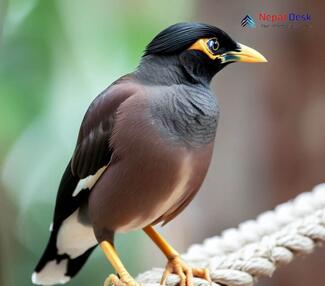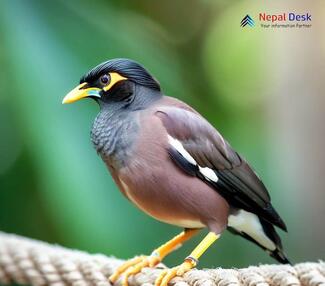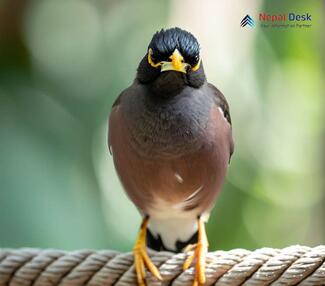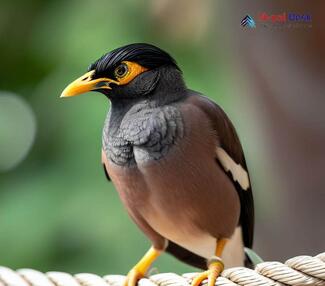Nepal, a paradise for nature enthusiasts, is home to a diverse range of landscapes and an astonishing variety of wildlife. One such fascinating creature is the Common Myna (Acridotheres tristis), a bird native to the country. The French zoologist Mathurin Jacques Brisson first documented this species in 1760, while the name "tristis" originates from the Latin term for "sad" or "gloomy." Now belonging to the Acridotheres genus introduced by French ornithologist Louis Jean Pierre Vieillot in 1816, the bird's genus name merges two Greek words – akridos (locust) and theras (hunter).
Let's explore more about Nepal's Common Myna by delving into its various characteristics below:
Unique Appearance and Behavior
Featuring a dark brown body along with a vibrant yellow beak, legs, and eye patch, the medium-sized Common Myna stands out in the crowd. While flying, its white wing patches are visible, enhancing its remarkable appearance. Its distinct look makes it easily recognizable even for occasional birdwatchers. This bird is well-known for being sociable and communicating through an extensive range of vocalizations – from pleasing whistles to harsh screeches.
Adaptable and Hardy
Thanks to its adaptable nature, the Common Myna thrives in diverse environments across Nepal – from forests to busy streets. Its diet mainly includes insects, fruits, seeds, and small rodents – showing flexibility that enables it to survive in various habitats. They also exhibit ingenuity when building nests using materials like twigs, leaves, or plastic.
Ecological Importance
Despite being considered invasive or bothersome due to their bold behavior in urban areas, Common Mynas play a vital role in their ecosystems. They assist in controlling insect and rodent populations, thus maintaining balance within the food chain. Furthermore, these birds have a give-and-take relationship with the plants they feed from, dispersing seeds and aiding in plant propagation.
Conservation Efforts
The IUCN Species Survival Commission has classified the Common Myna as one of the world's most invasive species. They pose a threat to biodiversity, agriculture, and human interests, especially in Australia, where they were deemed "The Most Important Pest/Problem" in 2008. While not classified as endangered currently, it's still crucial to be mindful of their conservation. Habitat loss due to deforestation and urbanization can negatively impact these birds. By safeguarding natural habitats and promoting harmony between urban spaces and wildlife, we can help ensure the Common Myna's continued success in Nepal.
In conclusion, the Common Myna is an extraordinary bird species spread throughout Nepal that captivates observers with its unique appearance and incredible adaptability. Apart from delighting birdwatchers, these birds also contribute significantly to the ecological balance within their native environment. So next time you come across a Common Myna in Nepal, take a moment to appreciate this amazing avian species and its remarkable ability to flourish in diverse conditions.




